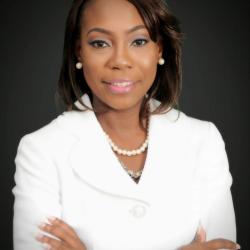Applying a gender lens on post disaster needs assessment in the Caribbean
Kyana shares her experiences of ensuring post disaster needs assessments are gender-responsive and capture the nuanced ways in which disasters affect different groups.
Why gender-responsive needs assessments?
Disruptions to services, disruptions to livelihoods compounded with the potential loss of life, are the distinct realities when natural hazards strike. These scenarios exacerbate existing vulnerabilities for the Caribbean too often resulting in unequal impacts for men and women.
Post Disaster Needs Assessments (PDNAs) are therefore critical to determine the cost of physical damages and economic losses, and costs to meet recovery needs post disasters. Notwithstanding the cost-related impact assessments, PDNAs also provide a valuable and holistic understanding of the social impacts for cross-cutting issues such as Disaster Risk Management (DRM) and Gender, which all impact on the human development context of a country. They also provide information that can inform policies to strengthen efforts to build back better.
What is required?
Effective PDNAs in the Caribbean context require baseline and post disaster impact gender disaggregated data, appropriate tools and resources, coordinated and timely gender analysis, and a comprehensive review of the existing business continuity and hazard mitigation plans.
Sex disaggregated data and gender statistics as it relates to women’s physical safety and security (safe spaces), access to services and mechanisms in place to address instances of gender-based violence (GBV), is fundamental. For example, a GBV Safety Audit supported the PDNA process post the eruption of the La Soufrière volcano in Saint Vincent and the Grenadines in 2021. Having coordination mechanisms in place at the regional and national levels, allowed for early recovery activities to be organised as it relates to protection (general and children)/GBV and livelihoods. Partner agencies such as UNFPA, UN Women, UNICEF, IOM, were able to mobilise an effective humanitarian response and early recovery effort, collaborating with the National Gender Machinery for activities such as the distribution of protection kits and the PDNA process.
Dominica’s PDNA post Hurricane Maria in 2017 confirmed damages totalling Eastern Caribbean Dollars (EC) $2.51 billion (US$931 million), and losses of EC$1.03 billion (US$382 million); with recovery needs for reconstruction and resilience interventions amounting to EC$3.69 billion (US$1.37 billion) (GFDRR, 2020). Moreover, the PDNA maintained that critical employment sectors such as agriculture and tourism “will take up to 12 months to resume regular operations, and therefore restoring the livelihoods in these sectors” (Commonwealth of Dominica, 2017). Having that in mind, with the impact of COVID-19 a mere two years later, it is possible to assess that populations who already experience economic and social vulnerabilities may require direct support to support livelihood recovery; and women and girls in particular.
PDNAs that eliminate gender analyses will fail to capture the nuanced ways in which disasters affect populations and would thereby result in poorly designed and failed implementation of recovery plans.
Conversely, gender-responsive PDNAs will highlight gender differences, and this data is required to address existing inequality in strengthening disaster resilience across the Caribbean ensuring more inclusive post-disaster response and recovery.
About the Author:
Kyana Bowen is a Programme Officer with the UN Women Multi-Country Office in the Caribbean and manages the humanitarian, climate change and disaster risk reduction portfolio, including the EnGenDER project. She has over ten years of experience and has contributed to a number of post disaster impact assessments and recovery plans around the Caribbean region.
